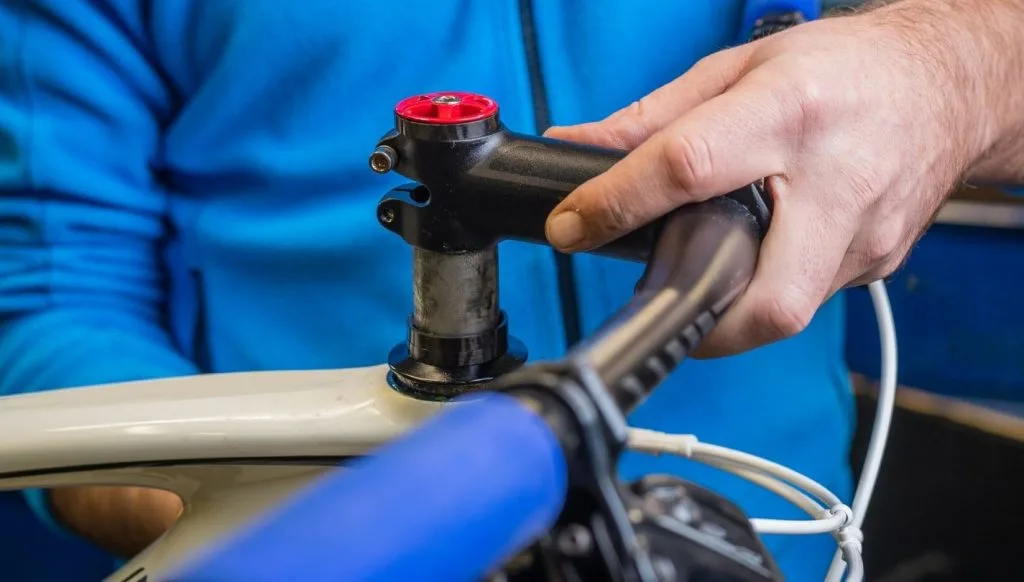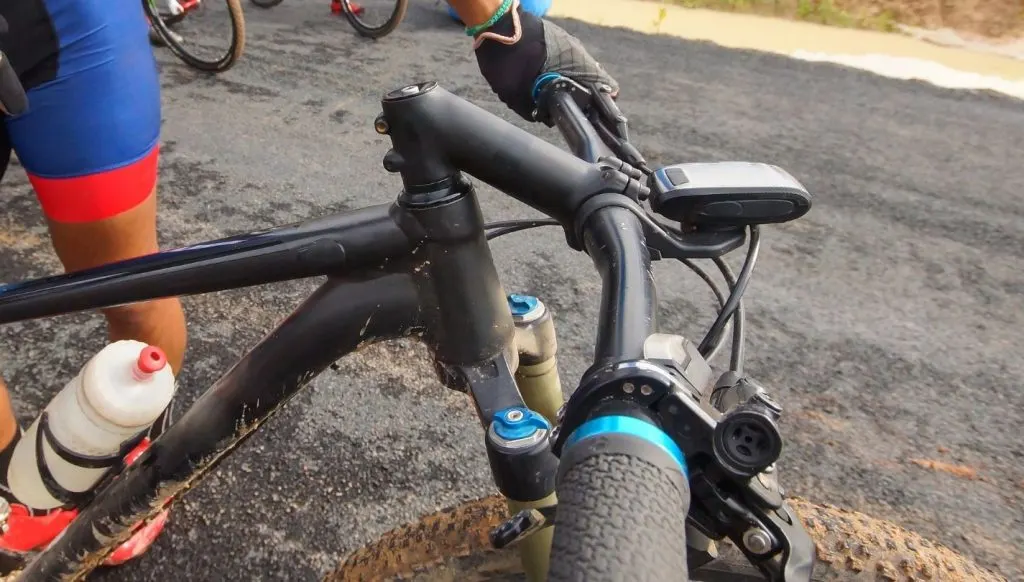
A bike stem riser is designed to raise the height of the handlebars on either a road or mountain bike. This is so that the rider has a more upright position on the bike, and instead of getting new handlebars that are more upright, the bike stem riser is a simpler and cheaper way to do that.
Bike stem risers are considered safe and, in most cases, would be sufficient to achieve the increase in the height of the handlebars required. However, there are some instances when these are not safe, which depends on the material and the riding you do.
Let’s look at how these work, why they work, and when they won’t work so you have a complete guide on whether a bike stem riser would be safe and effective for you.
What Is A Bike Stem Riser & What Does It Do?
A bike stem riser or stem extender is a piece of tubular steel, usually about 5 inches long. It’s designed to fit into the steering column on your bike, extend the fork steerer, and raise your handlebars.
There are other ways to do this, which will be discussed later on, but the stem riser is often the easiest, simplest and cheapest way to achieve more height on the handlebars for riders looking to have a more upright riding position.
It’s clamped onto the fork steerer with the same set of clamps as the stem and is only used on threadless steerers as the threaded ones offer adjustment at will with no extender required.
The other point to consider with stem risers is the thickness. For the stem riser to be effective, you need to clamp it with a lot more force than average, and if the riser isn’t thick or strong enough, it can crack.
Because you now have a steerer with two pieces involved, you need to ensure that the riser you get is strong enough to be clamped in properly without breaking.
Are Stem Risers Safe With All Steerers?
Adding a stem riser means you need to clamp the steerer a lot harder than you would if it was just the stem on its own. This is no problem with metal or aluminum steerers as they are more than strong enough to deal with the extra clamp pressure.
However, stem risers are not recommended for carbon steerers as there is a limit to the amount of clamp pressure you can use on a carbon steerer. The carbon steerer would have a risk of breaking due to the increased leverage created by the stem riser.
By raising the handlebars, there is now a longer lever on the frame, and this creates more pressure and force on the stem, and with a lighter material like carbon, it can break under pressure.
Why Riders Want To Raise Their Handlebars
A rider would have two main reasons why they would want their bars higher on their bike. Firstly, it may be that the rider has a back injury, and the more hunched over riding position aggravates the injury or makes it very uncomfortable to ride bent over.
Secondly, riders want to be more upright on the bike again because it’s more comfortable, and because they only ride occasionally, they don’t need to spend big money on new bars or new stems.
Raising the handlebars can create a few issues if you raise it high enough, one of those being that you may need to re-adjust or even change your shifter and braking cables as they may become taut under the extra length.
Before you raise your bars, consult your local bike-pro or mechanic to establish whether using a bike stem riser would work and be the best option for you and whether doing this would require the adjustment or replacement of shifter and brake cables.
What Other Options Are There To Raise Handlebars

While the stem riser is the easiest, it may not be the best, depending on your type of riding. Sometimes you may find that reversing your stem may work. While this may move the bars a little away from you; you can adjust your setup to match.
Remember, though, that any adjustment to the height of the bars will affect the steering response. A longer stem makes steering less responsive and sluggish, while a shorter one makes it quicker.
Depending on the stem angles, it may also change your riding position to either more forward over the bars or further away and more upright.
The other option to consider is another set of handlebars, especially if you are only looking to raise the bars a little bit. Going this route may not be the cheapest, but can save you some aggravation and frustration in the long run.
Constantly battling with your position and trying to stay comfortable on the bike, especially for long rides or races, can become an annoyance of note. New bars that match your desired position and don’t risk stem riser failure may be a better option overall.
When Is A Bike Stem Riser Not Recommended
The issue with bike stem risers is that it compromises the riding position you set up in when you bought the bike. For casual riders, this is fine, but if you are doing competitive road racing, this solution will not work for you.
Raising the bars will shift your position on the bike and possibly compromise your ability to deliver the same amount of power as your weight shifts further backward.
While this may be a practical short-term solution, if you intend to improve your road cycling, you would be better off with a different stem or even a new set of bars.
Stem risers are also not recommended for mountain biking, especially if you are doing some serious descending with lots of bumps, jumps, and heaving landings. The pressure exerted on the stem riser will eventually cause it to break, and you DON’T want that happening amid an intense downhill run or race!
Can You Install A Stem Riser Yourself?
The straight answer is yes, you can. The issue is whether you should. If you have extensive experience and are confident in your mechanical skills to perform this and know the right amounts of torque you can apply, then by all means go ahead.
You won’t need many tools to do this at all as it is a relatively simple operation. However, if you are relatively new to cycling, whether road or mountain biking, or feel your skills are limited to changing tires and lubing chains, it would be prudent to have a bike mechanic do this.
A bike mechanic will be able to see whether or not adding the riser will require the changing of cables, and if need be, he can do it simultaneously.
Before you add a bike stem riser, though, it would be good to get correctly set up on your bike if you haven’t done it.
The setup will take all the necessary data, including the bike and frame geometry, body geometry like your leg length, arm length, height, riding position, and optimal riding height and position, and then adjust the bike to match.
Once you’ve done this, you need to ride a few times to get used to it, and then, if you find that it’s not working and you feel you need the bars higher, you can look at ways to lift the bars.
Conclusion
As far as stem risers being safe goes, the answer is yes; they are safe. But it doesn’t end there, as you need to consider what type of riding you are doing now and what your riding aspirations are.
Regardless of the riding type and style, your safety must be the top priority with any bike. You must carefully weigh up all the factors and options involved before making any alterations to the existing setup and handlebar height.
If you are content with casual riding and not going into competitive road or mountain biking, the stem risers are a super simple and cost-effective solution to higher bars. If you are planning on becoming a bit more serious, it would be advisable to look at more suitable options.
